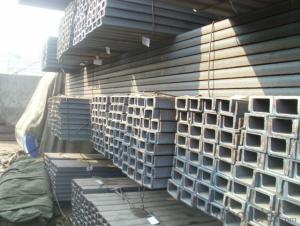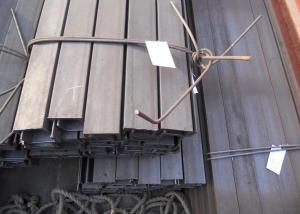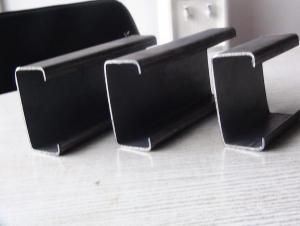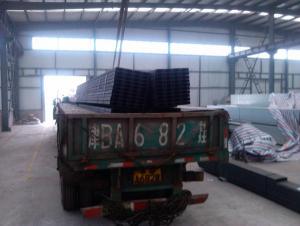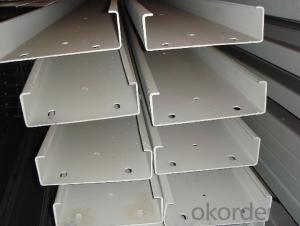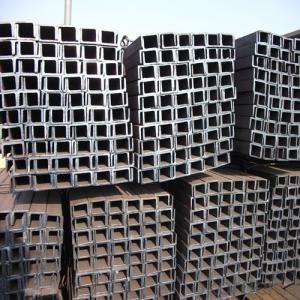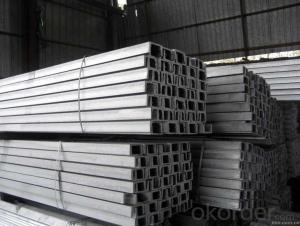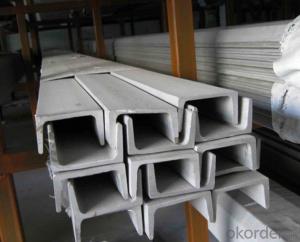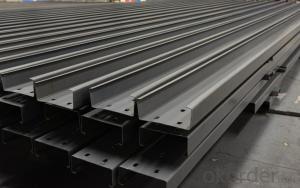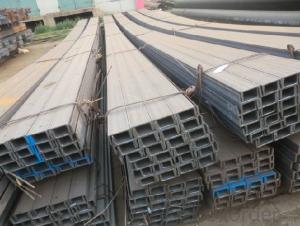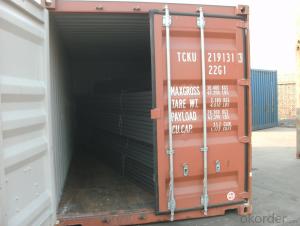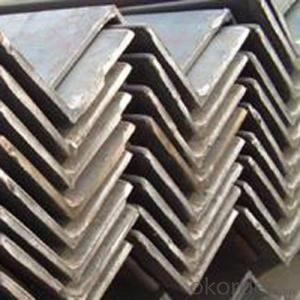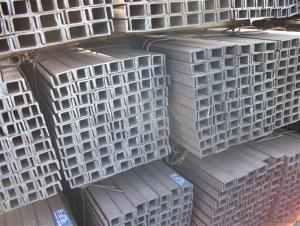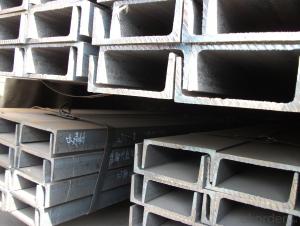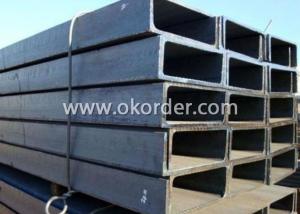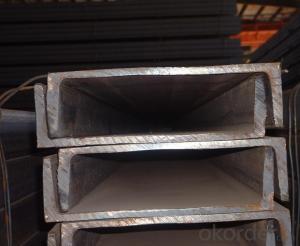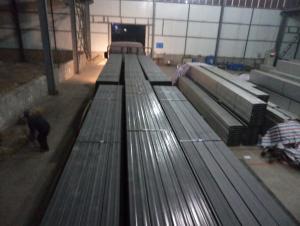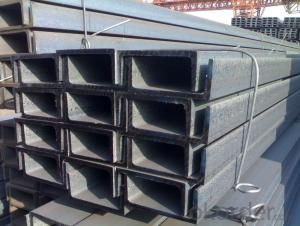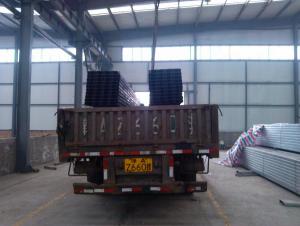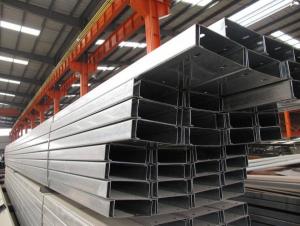U Channel Hot Rolled Steel Made In China GB JIS EN DIN
- Loading Port:
- Tianjin
- Payment Terms:
- TT OR LC
- Min Order Qty:
- 50 m.t.
- Supply Capability:
- 40000 m.t./month
OKorder Service Pledge
OKorder Financial Service
You Might Also Like
Specification
Product Description:
OKorder is offering U Channel Hot Rolled Steel Made In China GB JIS EN DIN at great prices with worldwide shipping. Our supplier is a world-class manufacturer of steel, with our products utilized the world over. OKorder annually supplies products to European, North American and Asian markets. We provide quotations within 24 hours of receiving an inquiry and guarantee competitive prices.
Product Applications:
U Channel Hot Rolled Steel Made In China GB JIS EN DIN are ideal for structural applications and are widely used in the construction of buildings and bridges, and the manufacturing, petrochemical, and transportation industries.
Product Advantages:
OKorder's U Channel Hot Rolled Steel Made In China GB JIS EN DIN are durable, strong, and resist corrosion.
Main Product Features:
· Premium quality
· Prompt delivery & seaworthy packing (30 days after receiving deposit)
· Corrosion resistance
· Can be recycled and reused
· Mill test certification
· Professional Service
· Competitive pricing
Product Specifications:
Standard Applied: GB Standard, EN Standard(UPN), JIS Standard
Sizes: 50mm to 300mm
Material Grade: Q235B, Q345B, S235JR, SS400, ASTM A36
As shown in the figure:
JIS U CHANNEL | Standard h | Sectional b | Dimension s | t | Mass: Kg/m |
(mm) | (mm) | (mm) | (mm) | ||
50x25 | 50 | 25 | 3.0 | 6.00 | 2.37 |
75X40 | 75 | 40 | 3.8 | 7.00 | 5.30 |
75X40 | 75 | 40 | 4.0 | 7.00 | 5.60 |
75X40 | 75 | 40 | 4.5 | 7.00 | 5.85 |
75X40 | 75 | 40 | 5.0 | 7.00 | 6.92 |
100X50 | 100 | 50 | 3.8 | 6.00 | 7.30 |
100X50 | 100 | 50 | 4.2 | 6.00 | 8.03 |
100X50 | 100 | 50 | 4.5 | 7.50 | 8.97 |
100X50 | 100 | 50 | 5.0 | 7.50 | 9.36 |
125X65 | 125 | 65 | 5.2 | 6.80 | 11.66 |
125X65 | 125 | 65 | 5.3 | 6.80 | 12.17 |
125X65 | 125 | 65 | 5.5 | 8.00 | 12.91 |
125X65 | 125 | 65 | 6.0 | 8.00 | 13.40 |
150x75 | 150 | 75 | 5.5 | 7.30 | 14.66 |
150x75 | 150 | 75 | 5.7 | 10.00 | 16.71 |
150x75 | 150 | 75 | 6.0 | 10.00 | 17.90 |
150x75 | 150 | 75 | 6.5 | 10.00 | 18.60 |
1.We are able to provide channel steel of top quality at attractive price.
2.Our products of channel steel have passed ISO9001:2008 Quality Management System Certification.
Package & Delivery of Channel Steel:
The steel u channel will be packed in bundle with steel wire at each end of every bundle and color marking in order to help the customer to recognize his goods more easily at sight.
And steel u channel could be loaded into 20ft or 40ft container, or by bulk cargo. If the weight of each bundle reaches less than 3.5 mt, the loading by break bulk cargo should be choosed. When the weight of each bundle reaches less than 3mt, the loading by container should be choosed.
As for the transportaion from mill to loading port, the truck will be usually used. And the maximum quantity for each truck is 40mt.
All in all, we could do in accordance with customer's request.
FAQ:
Q1: Why buy Materials & Equipment from OKorder.com?
A1: All products offered byOKorder.com are carefully selected from China's most reliable manufacturing enterprises. Through its ISO certifications, OKorder.com adheres to the highest standards and a commitment to supply chain safety and customer satisfaction.
Q2: How do we guarantee the quality of our products?
A2: We have established an advanced quality management system which conducts strict quality tests at every step, from raw materials to the final product. At the same time, we provide extensive follow-up service assurances as required.
Q3: How soon can we receive the product after purchase?
A3: Within three days of placing an order, we will begin production. The specific shipping date is dependent upon international and government factors, but is typically 7 to 10 workdays.
Q4: What makes stainless steel stainless?
A4: Stainless steel must contain at least 10.5 % chromium. It is this element that reacts with the oxygen in the air to form a complex chrome-oxide surface layer that is invisible but strong enough to prevent further oxygen from "staining" (rusting) the surface. Higher levels of chromium and the addition of other alloying elements such as nickel and molybdenum enhance this surface layer and improve the corrosion resistance of the stainless material.
Q5: Can stainless steel rust?
A5: Stainless does not "rust" as you think of regular steel rusting with a red oxide on the surface that flakes off. If you see red rust it is probably due to some iron particles that have contaminated the surface of the stainless steel and it is these iron particles that are rusting. Look at the source of the rusting and see if you can remove it from the surface.
Images:
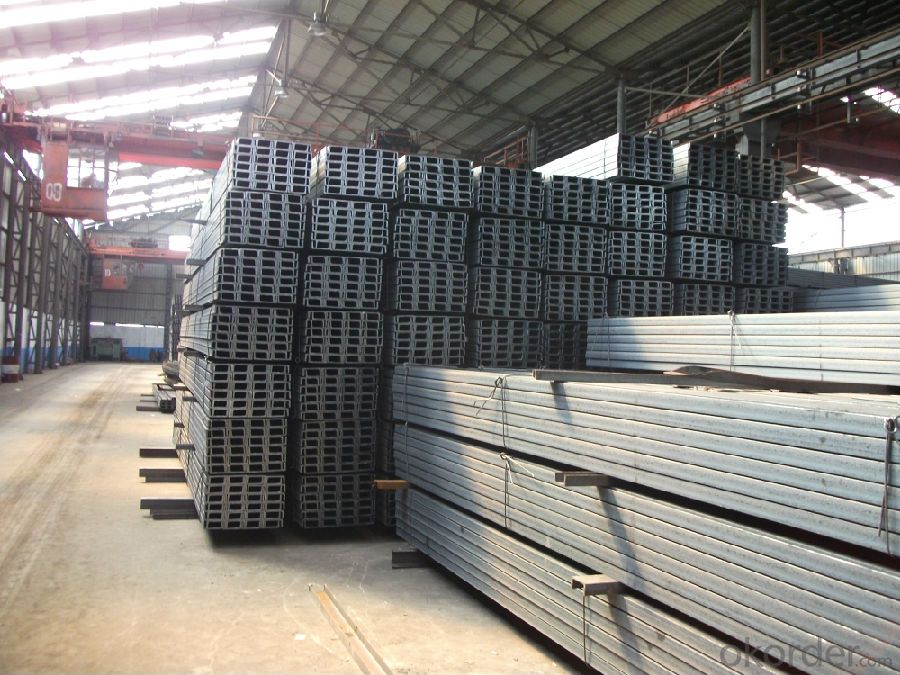
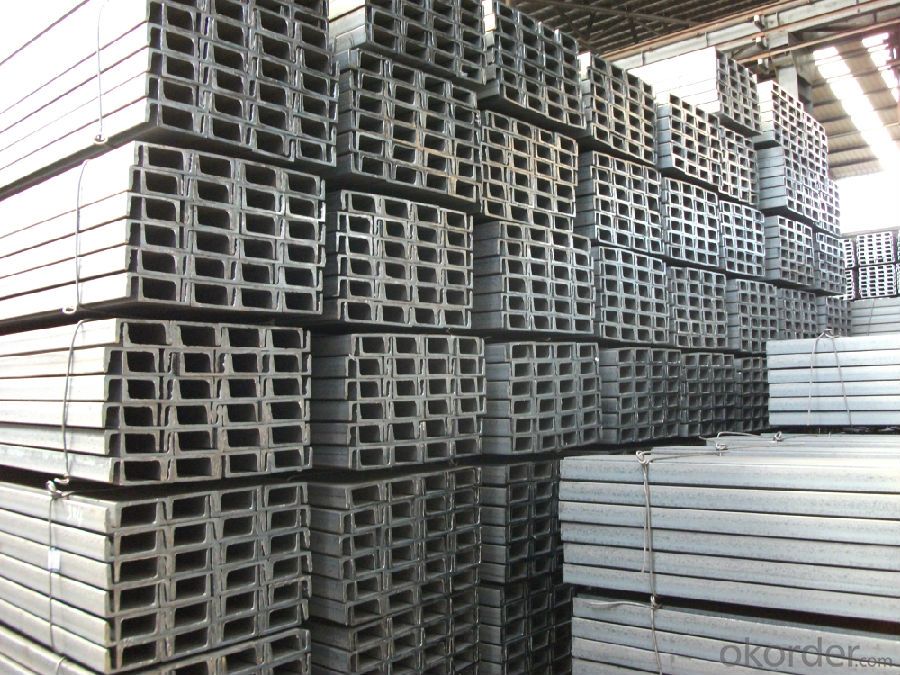
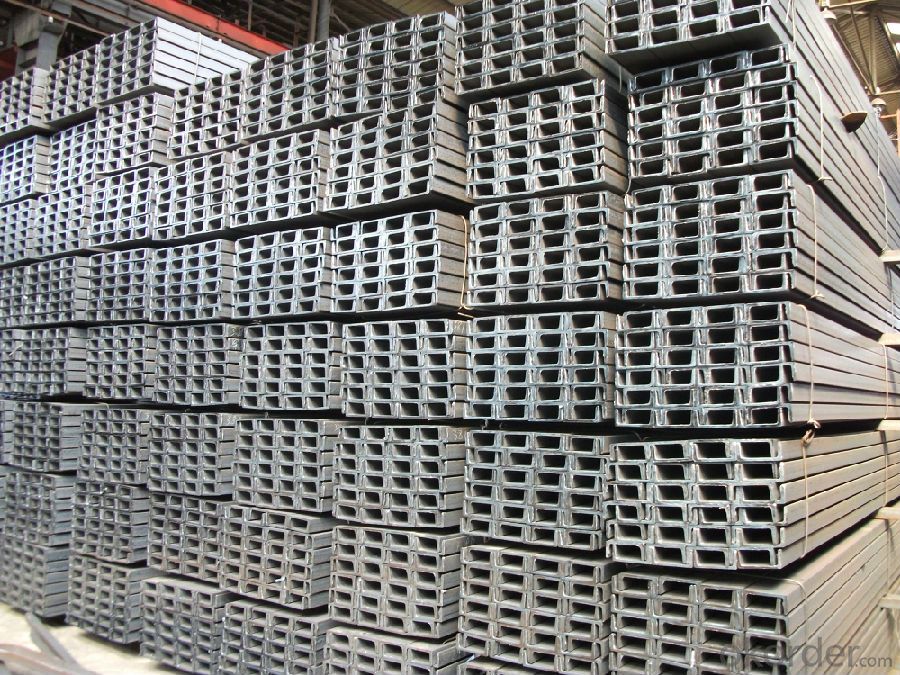
- Q: How do you calculate the deflection of steel channels?
- To calculate the deflection of steel channels, you need to consider various factors such as the material properties, dimensions, loading conditions, and support conditions. The deflection of a steel channel can be determined using the principles of structural mechanics and beam theory. Here is a step-by-step process to calculate the deflection: 1. Determine the material properties: Obtain the modulus of elasticity (E) and the moment of inertia (I) of the steel channel. These values can be obtained from material specifications or reference manuals. 2. Determine the dimensions: Measure or obtain the dimensions of the steel channel, including the height (h), width (b), and thickness (t). These measurements are necessary to calculate the moment of inertia. 3. Determine the loading conditions: Identify the applied loads, such as point loads, distributed loads, or moments, acting on the steel channel. Determine the magnitude and location of these loads. 4. Identify the support conditions: Determine whether the steel channel is simply supported, fixed at both ends, or has other support conditions. This information is critical to determine the appropriate boundary conditions for the deflection calculation. 5. Determine the type of beam equation to use: Based on the loading and support conditions, select the appropriate beam equation to calculate the deflection. Common equations include the Euler-Bernoulli beam equation or the Timoshenko beam equation. 6. Apply the beam equation: Substitute the appropriate values into the selected beam equation. This equation relates the deflection (δ) to the applied loads, material properties, and dimensions of the steel channel. 7. Solve the beam equation: Depending on the complexity of the loading and support conditions, you may need to solve the beam equation analytically, numerically, or using software tools. Analytical solutions are available for simple loading and support conditions, while numerical methods or software tools may be necessary for more complex scenarios. 8. Calculate the deflection: Once you have solved the beam equation, you can calculate the deflection of the steel channel at specific points or along its entire length. The deflection is typically measured in units of length (e.g., inches or millimeters). It is important to note that calculating the deflection of steel channels is a complex process, and it is recommended to consult relevant engineering codes, standards, or reference materials for detailed equations and procedures specific to your application. Additionally, consider seeking assistance from a qualified structural engineer for accurate and reliable results.
- Q: What is the load-carrying capacity of steel channels?
- The load-carrying capacity of steel channels depends on various factors such as the size, shape, and grade of the channel, as well as the support conditions and the type of load applied. It is typically determined through engineering calculations and testing to ensure structural safety and compliance with applicable building codes and standards.
- Q: Can steel channels be used in earthquake-prone areas?
- Provided that they are designed and installed correctly, steel channels can be utilized in earthquake-prone regions. Steel, being a robust and durable material, is suitable for withstanding seismic forces. However, several factors must be considered when implementing steel channels in such areas. First and foremost, the design of the steel channels must adhere to the applicable seismic codes and regulations. These codes provide guidelines that outline the minimum requirements for structural integrity and seismic resistance. Engineers must take into account factors like the seismic activity of the region, soil conditions, and anticipated ground movements to ensure that the steel channels can endure the forces generated during an earthquake. Secondly, proper installation is of utmost importance to guarantee the effectiveness of steel channels in earthquake-prone areas. The channels must be securely anchored to the foundation and connected to other structural components to form a robust system. It is necessary to employ welding or bolting methods to ensure strong connections and prevent any potential points of failure. Furthermore, regular inspections and maintenance are essential to uphold the ongoing structural integrity of the steel channels. This entails checking for any signs of deterioration, damage, or corrosion that may jeopardize their performance during an earthquake. Any identified issues should be promptly addressed to maintain the channels' effectiveness in seismic events. It is also important to note that while steel channels can provide structural strength, it is imperative to consider other factors holistically, such as building design, foundation systems, and overall construction, to ensure the safety of buildings in earthquake-prone areas. In conclusion, steel channels can indeed be utilized in earthquake-prone areas if they are designed, installed, and maintained correctly. Adhering to seismic codes, ensuring proper installation, conducting regular inspections, and considering other building factors are all crucial in guaranteeing the structural integrity and safety of buildings in these regions.
- Q: What are the different installation methods for steel channels?
- Steel channels can be installed using various methods, depending on the application and requirements. Some commonly used installation methods include: 1. Welding: To install steel channels, welding is a popular choice. It involves utilizing a welding machine to connect the channels to other structural components or each other. Welding creates a strong and durable connection, making it suitable for heavy-duty applications. 2. Bolting: Another widely used installation method is bolting. This method involves connecting steel channels using bolts and nuts. It allows for easy disassembly and reassembly, making it suitable for applications requiring frequent modifications or adjustments. 3. Adhesive Bonding: Adhesive bonding is a method that employs a strong adhesive to join steel channels together. This method is often preferred when a seamless and aesthetically pleasing appearance is desired, as it eliminates the need for visible bolts or welding seams. 4. Mechanical Fasteners: Mechanical fasteners, such as screws or rivets, can also be employed for installing steel channels. This method is quick and straightforward, providing a strong connection. It is commonly utilized in applications where disassembly is not required. 5. Clamping: Clamping is a method that utilizes clamps or brackets to secure steel channels to other components. It allows for easy adjustment and alignment, making it suitable for applications requiring precise positioning. 6. Sliding: Sliding installation is commonly used when channels need to be adjusted or moved. It involves inserting the channels into a track or groove, facilitating easy sliding and repositioning. In conclusion, the selection of the installation method for steel channels depends on factors such as the specific application, the required level of adjustability, desired appearance, and the necessary strength and durability. It is crucial to carefully consider these factors to ensure a successful and reliable installation.
- Q: What is the difference between channel steel and C steel?
- Section C is produced by cold rolling of strip steel, which is generally supplied by steel structure and thinner in thickness. In addition, their cross-section is not the same, the channel is straight side, C steel is curling.
- Q: Can steel channels be used for creating signage or display structures?
- Yes, steel channels can be used for creating signage or display structures. Steel channels are durable, strong, and versatile, making them suitable for supporting and framing various types of displays and signage. Additionally, their structural integrity allows for customization and the ability to handle heavier loads, making them a popular choice for creating robust and long-lasting signage or display structures.
- Q: What is the elastic modulus of steel?
- The general definition of the modulus of elasticity is that the stresses in the one-way stress state are divided by the strain in that direction.
- Q: Are steel channels available in non-standard lengths?
- Non-standard lengths of steel channels are indeed obtainable. Although the usual lengths for steel channels usually span 20 feet or 6 meters, there exist manufacturers and suppliers who extend custom cutting services to cater to customers' specific requirements. Such provision grants construction and fabrication projects greater flexibility, accommodating the demand for precise measurements and tailored lengths. Furthermore, non-standard lengths offer the advantage of minimizing waste and optimizing material usage, ultimately resulting in cost savings. To explore the possibilities and capabilities of steel channel suppliers or manufacturers regarding non-standard lengths, it is essential to consult them directly.
- Q: How do steel channels contribute to thermal insulation?
- Steel channels do not contribute to thermal insulation. In fact, they have a high thermal conductivity, which means they can conduct heat easily.
- Q: How are steel channels measured?
- Two key dimensions are typically used to measure steel channels: height and width. The height represents the vertical measurement from top to bottom, while the width represents the horizontal measurement from side to side. These dimensions play a crucial role in determining the size and shape of the channel, ultimately impacting its strength and load-bearing capacity. Additionally, the thickness of the steel used to construct the channel is also taken into account during measurement. This thickness is typically given in gauge or millimeters and signifies the thickness of the steel walls. By knowing the height, width, and thickness, one can ascertain the overall dimensions and characteristics of a steel channel, making it suitable for a wide range of construction and manufacturing applications.
Send your message to us
U Channel Hot Rolled Steel Made In China GB JIS EN DIN
- Loading Port:
- Tianjin
- Payment Terms:
- TT OR LC
- Min Order Qty:
- 50 m.t.
- Supply Capability:
- 40000 m.t./month
OKorder Service Pledge
OKorder Financial Service
Similar products
Hot products
Hot Searches
Related keywords
